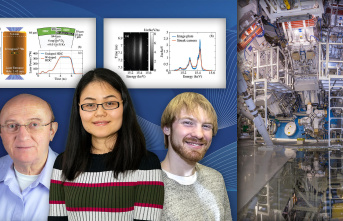Recent research by the Hefei Institutes of Physical Science of the Chinese Academy of Sciences, (CAS), has shown that helium can inhibit the penetration of hydrogen Isotopes into wall materials. The results were published in Nuclear Fusion.
The interaction between the boundary plasma and the material will result in deuterium or tritium entering the coolant and entering the reactor. This will increase the fuel cost and safety risks of the fusion reaction. The deuterium tritium fusion reaction produces helium particles that directly bombard the material's surface. This will affect the retention and permeation of deuterium.
This study examined the effects of helium plasma on candidate wall materials and structural materials for fusion reactors. It also explored the mechanisms of helium radiation to prevent the penetration of hydrogen isotopes into wall materials.
Researchers found that low-energy helium plasmas (pre-exposure) caused the formation of protruding nanostructures at the material's surface. With increasing helium pre-exposure fluence, the deuterium plasma-driven flux of permeation decreased slowly.
The results were combined with theoretical calculations and they found that both the surface topography evolution as well as the near-surface layer of helium bubbles had a double effect on hydrogen isotope penetration through material. The surface protruding structure increased incident ions' reflected flux and decreased the implantation flux. The near-surface helium balloons also reduced transport channels for inward diffusion of hydrogen atoms, further reducing the steady-state permeation flux.
This study is based on prior studies on hydrogen isotope permeability of wall materials and structural material. It provides quantitative analysis of the effect of helium radiation fluence. This can be used to support evaluation of tritium permeation within the first wall in fusion reactors.












